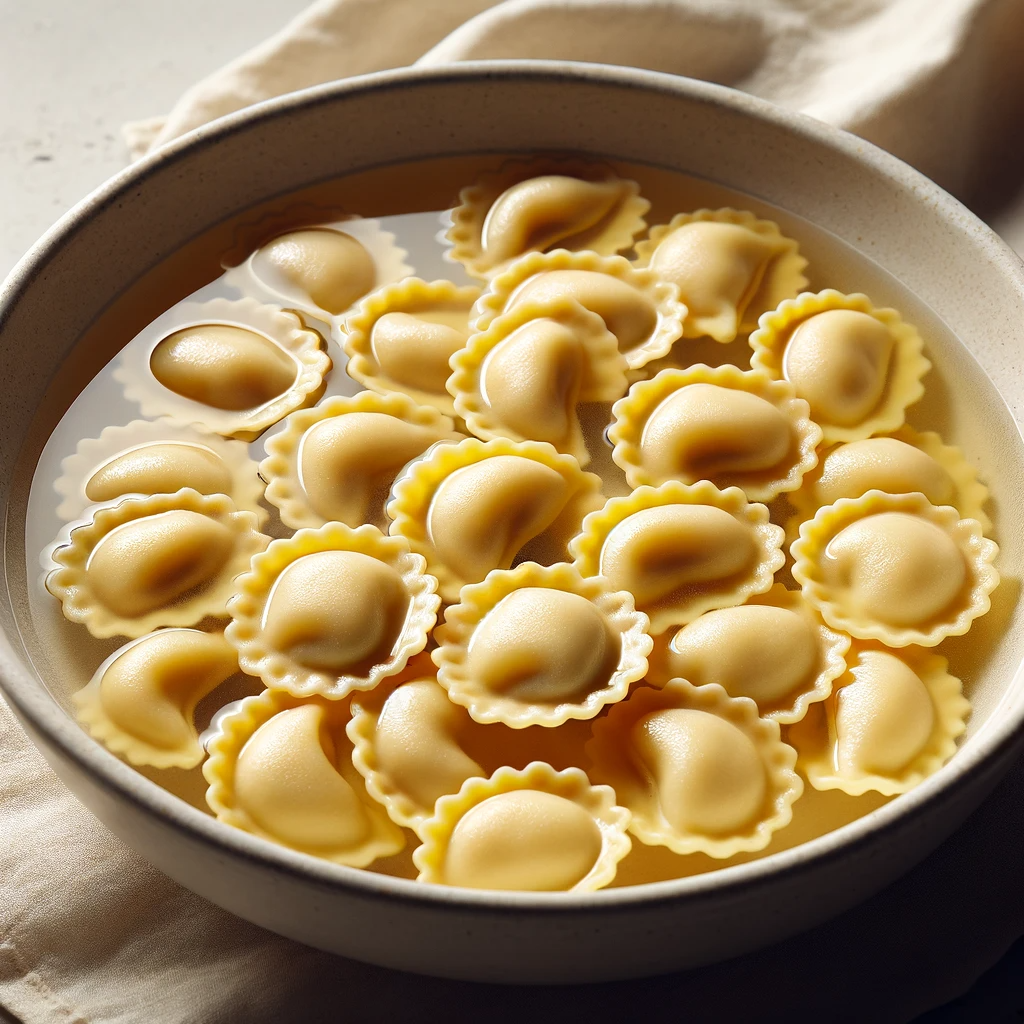As the festive season rolls around, the city of Parma in Italy transforms into a gastronomic paradise, offering a taste of authentic Christmas traditions that have been passed down through generations. Celebrating Christmas in Parma is not just a feast for the palate; it’s an immersive experience into a world where food is a language of love and tradition.
Antipasti: The Prelude to the Feast
The Christmas meal in Parma begins with an array of antipasti, setting the stage for the culinary delights to follow. The table is graced with local specialties, including the world-renowned Prosciutto di Parma and wheels of Parmigiano-Reggiano cheese. These simple yet elegant starters are a testament to Parma’s rich culinary heritage and provide a tantalizing introduction to the festive feast.
Anolini in Brodo: A Pasta Tradition

A star of the Parma Christmas table is “anolini in brodo,” a cherished pasta dish that showcases the region’s love for stuffed pasta. Originally from Piacenza, anolini quickly became a festive favorite in Parma. These little parcels of joy, often referred to as “galleggianti” or floating pasta, are filled with a unique blend of ingredients and served in a savory broth. The dish is steeped in history, with records tracing its presence on the tables of dukes and nobility, including Ranuccio II Farnese and Duchess Maria Luigia.
Bolliti: A Symphony of Boiled Meats
The main course often features “bolliti,” a selection of boiled meats that is a culinary signature of Parma. This dish includes various meats like beef, pork, and chicken, each cooked to tender perfection. The bolliti are typically accompanied by a variety of sauces and the famous mostarde from Bassa Parmense, known for its unique blend of quinces, sugar, and spices.
Cappone Ripieno: The Heart of the Feast
The main course often features “Cappone Ripieno,” a dish that is a true embodiment of the festive spirit in Parma. This delicacy involves a capon stuffed with a rich mixture of meats, bread, and herbs, slow-cooked to perfection. The Cappone Ripieno is not just a dish; it’s a celebration of flavors, textures, and aromas that bring families together around the Christmas table.
The Mostarda, the Bassa Parmense Variation
Mostarde, at its core, is a blend of candied fruits and a mustard-flavored syrup. The preparation varies from family to family, but the essence remains the same – a perfect balance between sweet and spicy that complements the rich flavors of the Christmas feast. In Parma, mostarde is an integral part of the festive meals, particularly accompanying the bolliti – the array of boiled meats that is a staple of the region’s holiday cuisine.
One of the most renowned variations of mostarde comes from the Bassa Parmense area. This version is particularly famous for its use of quince as the primary fruit, though other fruits like figs, apples, or pears are also commonly used. The fruits are cooked with sugar to create a thick, jam-like consistency, and then mustard oil or essence is added to provide a distinctive, piquant flavor. This juxtaposition of sweetness from the fruits and the sharp bite of mustard creates a condiment that is both complex and harmonious.
Parma’s Culinary Use of Balsamic Vinegar
In Parma, balsamic vinegar is celebrated for its versatility and is used in various ways in the kitchen. It can be found drizzled over Parmigiano-Reggiano cheese, enhancing the flavors with its acidic and sweet notes. It is also commonly used in salad dressings, marinades, and as a finishing touch on grilled meats and vegetables. In more elaborate dishes, balsamic vinegar is used to create rich, flavorful reductions that add depth and complexity to the meal.
A Tradition Rooted in Neighboring Regions
While Parma itself is not the primary producer of traditional balsamic vinegar (that honor goes to Modena and Reggio Emilia, which are nearby), the influence and use of this exquisite condiment are strongly felt in Parma’s cuisine. The proximity of these regions has allowed for a seamless integration of balsamic vinegar into the culinary traditions of Parma. The shared cultural and gastronomic heritage of the Emilia-Romagna region is epitomized in this interchange.
Spongata: The Sweet Finale
No Christmas meal in Parma would be complete without the sweet conclusion of Spongata. This traditional pastry, with its origins tracing back to Jewish cuisine, has become a festive staple. The outer layer of delicate pastry encases a rich filling of dried fruits, honey, and crushed amaretti biscuits. Each bite of Spongata is a journey through the sweet flavors that have warmed the hearts of Parmigiani for centuries.
A Feast Beyond the Plate
Celebrating Christmas in Parma is about more than just indulging in exquisite food; it’s about the experience of togetherness, sharing stories, and creating memories around the dinner table. The city, with its medieval charm and festive decorations, provides the perfect backdrop for this gastronomic celebration.
Invitation to a Culinary Adventure
For travelers and food enthusiasts, spending Christmas in Parma is an opportunity to partake in a time-honored culinary tradition. It’s an invitation to savor dishes that tell the story of the region, its people, and their love for food. Each dish, from the antipasti to the sweet Spongata, is a chapter in the rich tapestry of Parma’s culinary history.
In summary, Christmas in Parma offers a delightful exploration of flavors and traditions. The combination of cherished recipes, the finest local ingredients, and the joy of shared experiences makes dining in Parma during Christmas a truly enchanting affair. For anyone looking to experience the heart and soul of Italian culinary traditions, Parma during Christmas is a destination not to be missed.

